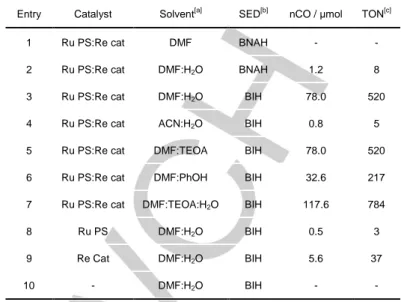Visible-Light-Driven Reduction of CO$_2$ to CO and Its Subsequent Valorization in Carbonylation Chemistry and $^{13}$C Isotope Labeling
Texte intégral
Figure


Documents relatifs
4 compares the BER of different separation distance d for the three main parameters of the studied model, Incidence Angle φ , Bandwidth B, and Ambient Noise Power P bg ,
Ecole Joliot Curie ”Production d’énergie nucléaire et traitement des déchets : des filières d’aujourd’hui aux solutions innovantes”, Maubuisson, (France), du 9-14 septembre
This visible light communication is dedicated to the cooperation between vehicles and road infrastructures to enhance the security of the traffic.. This paper explains the
While no notable changes could be detected in the absorption spectrum, thermoluminescence (TL) could be excited by wavelengths shorter than 1 600 A. Results were compared with
Il n’y avait pas d’interférence cliniquement significative du vaccin avec la réponse immunitaire à d’autres vaccins (entre autres contre la diphtérie, le tétanos, la
It is possible to provide suggestions on how to enhance the efficiency of upconversion through a knowledge of t h e energy levels involved and energy transfer among both
The stability of the photocatalyst was investigated by recording seven consecutive photoreduction runs of a 10 4 M Cr(VI) aqueous solution in presence of 1 mg of pure CuS phase and
Furthermore, the dual presence of amide group and the 1D TiO chain unit in the porous structure of MIP-208 associated with an excellent thermal and hydrothermal stability